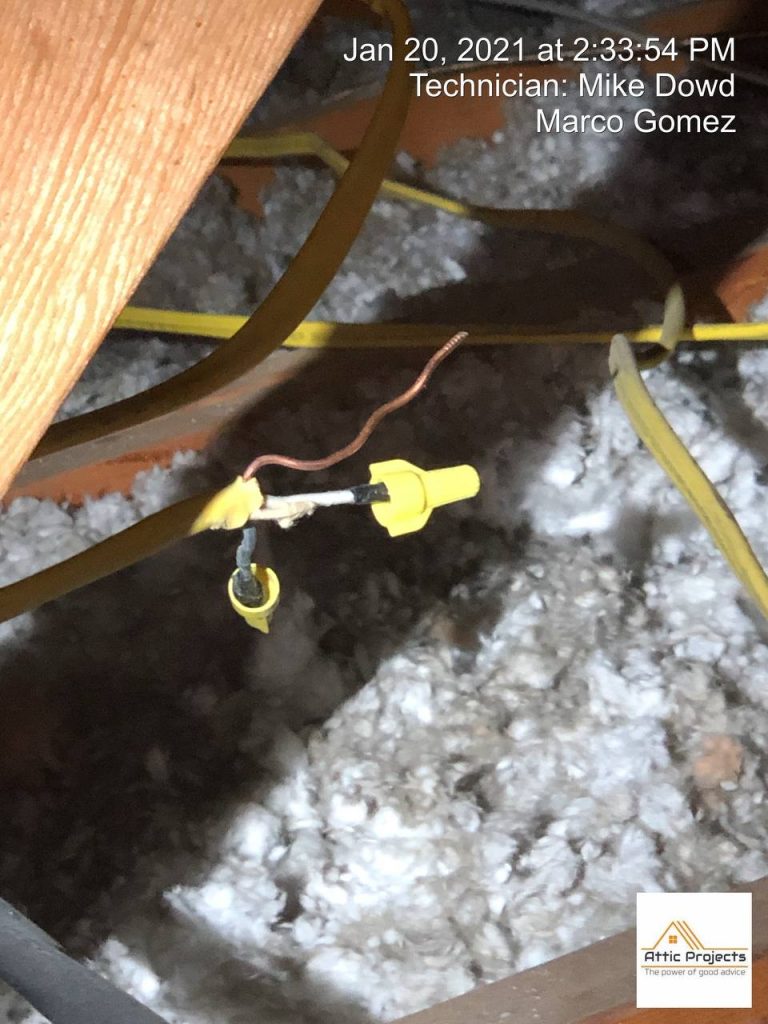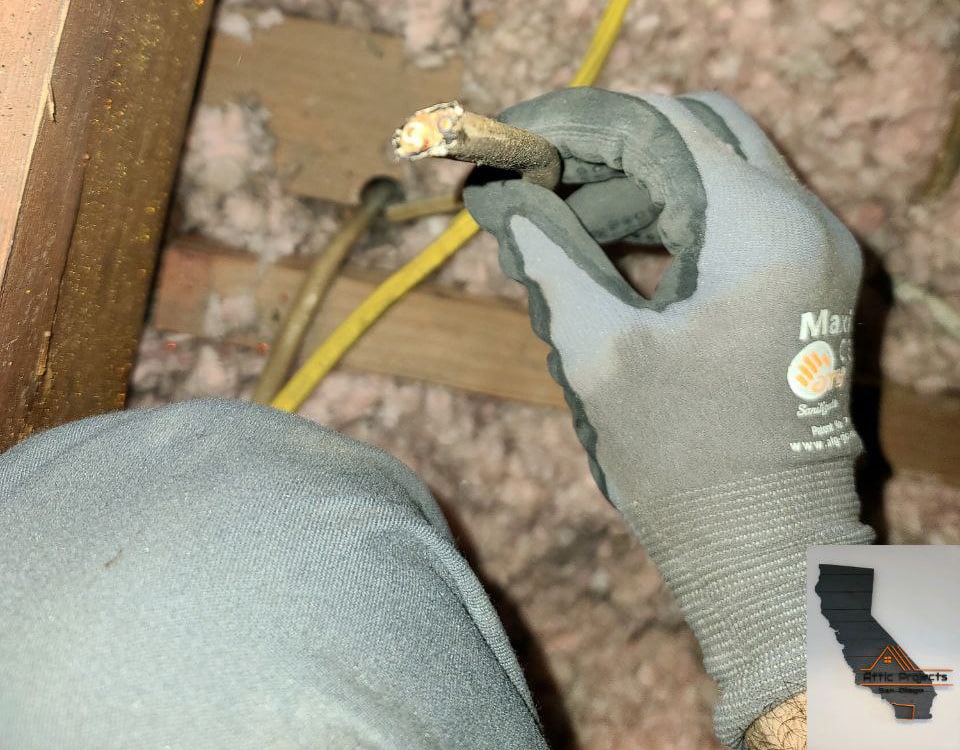
Should Wet Insulation Be Replaced?
Insulation is key in keeping your home comfortable and reducing energy usage. But it also faces various threats, with moisture being chief among them. Wet
Electrical Wire Inspection
Fill out the form or call at
When was the last time you had your electrical wires inspected?
Fire concerns are at the forefront of every homeowner’s mind, especially if you own an older home. Faulty wiring can cause electrical fires and is an issue that you should be aware of and address immediately. Wires that are exposed, damaged, outdated, or were poorly installed wiring cause electrical fires that cause billions of dollars in property damage and hundreds of deaths per year. Don’t allow your home to be just another statistic.
Our Attic Projects experts will conduct an electrical wiring inspection that includes an extensive examination of your entire electrical system. We want to make sure your system meetings the legal safety standards. Contact Attic Projects today if you have any concerns about your electrical wires.
You should have your electrical wires inspected during any of the following circumstances:
Power surges, fire, or shocks that can be fatal, and faulty power arcs can be caused by bad wiring. Electrical fires rarely exude smells, which is why they are so deadly. They get worse before anyone notices them. And since no smoke is produced, smoke alarms rarely detect them. It could take up to one year for bad wires to ignite, but once an electrical fire begins, it can be hard to put out.
Thousands of homes catch fire each year due to electrical malfunctions. In order to keep your home protected, you should have your electrical wires inspected at least once every 30 years. If you have outdated or faulty electrical wires, your home can’t handle any increase in a power load, making them heat up quickly. The heat creates a huge fire threat that will put everyone in your home at risk. If you are worried about your electrical wiring, keep an eye out for these signs:
If you believe that your electrical wiring is outdated, you should contact us immediately. We will send a qualified electrician to perform a comprehensive inspection to remove and replace all damaged wires before they spark and start a serious fire.


Our professionals will inspect:
A FREE electrical wire inspection can only benefit you and your home. Some of those benefits include ensuring safe operations of the electrical components in your home, identifying any electrical mistakes, outdated, or degraded wiring, saving energy and reducing costs, and lowering your risk of having an electrical fire.
Contact Attic Projects today for a comprehensive inspection!
Electrical Wire Inspection | Knob and Tube Rewiring | Electrical Panel Upgrades | New Electrical Wires | Electrical Rodent Protection

When it comes to anything electrical in your attic, you should not complete the inspection without professional help. Damaged or broken wires can be extremely dangerous and can even result in death. If you want a free professional inspection, call Attic Projects today.
Bad wiring can cause electrical fires, shocks, power surges, and damaged power arcs. All of these consequences can be deadly if the damage is bad enough. Call Attic Projects today to get a free inspection of your electrical wiring.
If you suspect that your electrical wiring is worn out, or damaged, you should call a licensed professional right away to inspect and fix the issue. A professional can come out and fix the issue before more problems arise.
Yes! Rodents can chew through your wiring and the walls of your home. A main cause of wiring going bad is rodent infestations. If you have had a rodent infestation but are still experiencing electrical problems, contact Attic Projects today for a free inspection.
Rodents are a nightmare for any homeowner. They can lower the value of your home by causing serious damage, foul odors, and extensively unsanitary conditions. They also pose a significant health risk to you and your family by spreading disease and causing illness. The last thing you want is to waste your time removing rodents, only to have them move right back in. At Attic Projects, we not only humanely remove the rodents and pests from your home, but we also rodent-proof your home so they can’t come back. In order to keep the pests and rodents out permanently, you have to close up every entry point that they may squeeze into. Call Attic Projects today to get your free estimate.
Fill out the form or call us at

Insulation is key in keeping your home comfortable and reducing energy usage. But it also faces various threats, with moisture being chief among them. Wet

Summer may be a time of refreshing swims and exciting road trips, but the season also brings many challenges for homeowners. In particularly humid climates,

HISTORY OF FIBERGLASS INSULATION Fiberglass insulation, a material widely used in modern construction, has a history that dates back to the 1930s. The Owens Corning
